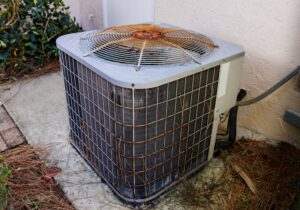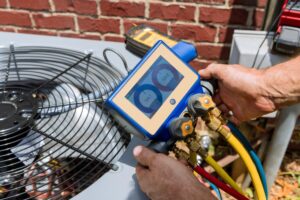No matter what type of comfort system you have, a (critical) part of the system is the Controls. For many homes this comes down to a single thermostat. Depending on what type of thermostat you have, your system may operate more of less efficiently and bring you more of less comfort. While you have many options for thermostats now a days (literally hundreds), you can break down these options into three categories: Non-programmable, Programmable, and Smart (WiFi enabled).
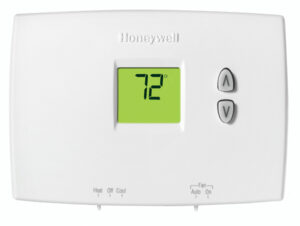 Non-Programmable:
Non-Programmable:
Benefits: These thermostats offer the end user a very simple and easy to use interface. The options are heat/off/cool and fan on/off. The set points are held at whatever temperature is chosen via the up and down arrows.
Drawbacks: The benefits of this thermostat are also the drawbacks. It’s simple… in all respects. YOU have to manage the temperature changes, the turning up and down, the on and off, the fan on or auto. While the thermostat seems easy to use… it would actually take an extraordinary amount of time and attention to get close to the efficiency and comfort that other system controls offer. These thermostats do not control auxiliary system components (humidifier, dehumidifier, ventilation…).
Best Used When: These controls are best used when a heating a space that just requires a single set point (garage heater, work shed….)
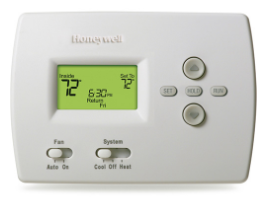
Programmable:
Benefits: Allows a user to set a schedule based on day/time to conserve energy. Some programmable thermostats also allow you to turn the fan on/off within that schedule. Many of these system controls can work with multiple staged systems to gain further efficiency and control comfort more accurately. Some of these thermostats can control limited system components (humidifier, dehumidifier, ventilation…).
Drawbacks: Given the small interface and limited input controls. These thermostats can often be the hardest to setup and edit programs on. Furthermore, this can often result in end users not using the programs all together.
Best Used When: These thermostats are most commonly used today (though that is quickly changing to the next category). These can be used in a homes main comfort system or in applications where zoning is applied.
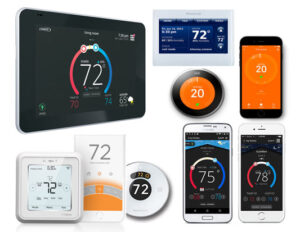
Smart or “Communicating”:
Benefits: These thermostats can communicate with the internet to bring in outdoor temperature levels, humidity levels, and allergen levels and auto negotiate your systems components to bring you maximum comfort at maximum efficiency. For example: if the allergen levels are high the system will turn the fan to circulate, this will reduce airborne particulate drastically. Customers can use these features with a smart phone and can be setup to automatically change to away mode when they sense you are not home. These are very easy to program and once setup, rarely need adjusting. Ensuring maximum efficiency and comfort at all times. Some of these even come with remote sensors. These control the temperature based on where you are in the house. In conclusion systems like this can control one or multiple auxiliary system components (humidifier, dehumidifier, ventilation…).
Drawbacks: The amount of features can seem overwhelming at times (you may not use all of them). Smart thermostats must be configured correctly or they can work against you. It takes more time to learn how these systems operate.
Best Used When: In most cases a smart thermostat is the best option. If you purchased a Lennox communicating system, the S30 or iComfort is a must have for the best efficiency and comfort of any comfort system available.

